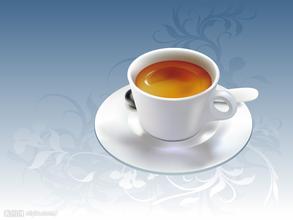Soft acidity Ethiopian coffee estate producing area Flavor Taste characteristics Fine coffee beans Introduction
In February 1977, Lieutenant Colonel Mengistu Haier Maryam (MENGISTU HAILE MARIAM) launched a military coup and served as Chairman and head of State of the interim military Administrative Council. In 1979, the Ethiopian Labor people's Party Organizing Committee, mainly composed of soldiers, was established to implement an one-party system. In 1984, the Ethiopian Workers' Party was formed according to the Soviet Communist Party model. In September 1987, Mengistu announced the dissolution of the "interim military Administrative Council", the end of military rule, the establishment of the "people's Democratic Republic of Ethiopia" and the establishment of a new parliament, with Mengistu as president and head of government.
In March 1988, the rebel "Eritrean people's Liberation Front" (EPLF) and the "Tigre people's Liberation Front" (TPLF) launched an attack on government forces, and a large-scale civil war broke out. In 1989, the Eritrean people's Liberation Front occupied most of Eritrea. On May 28, 1991, EGF troops, mainly the Tigre people's Liberation Front, entered Addis Ababa and the Mengistu regime was disintegrated. [3]
Transitional government period
In July 1991, EGF hosted a national conference with the participation of more than 20 political and ethnic organizations. The meeting adopted the Transitional Charter and elected an 87-member House of Representatives, with EGF Chairman Meles Zenawi as President and President of the Transitional Government. A transitional government was established. On 24 May 1993, Eritrea (formerly Eritrea Province of Ethiopia) became a sovereign State through a referendum under the supervision of the international community. [3]
The period of the federal government
In December 1994, the Constitution of the Federal Democratic Republic of Ethiopia was formulated. According to the Constitution, Ethiopia will implement a federal system and a parliamentary cabinet system after the general election for a term of five years. After the national election in May 1995, the Federal Democratic Republic of Ethiopia was established on August 22, and Meles became prime minister in her capacity as chairman of the majority party of the people's House of Representatives. On May 14, 2000, Ethiopia held a national election, and EGF defeated other opposition parties by an absolute majority to stay in power. In October, the new federal parliament and government were established, and the speakers of both houses and Prime Minister Meles were re-elected, and the original cabinet also remained in office with the approval of the parliament. In October 2001, May readjusted government institutions and reshuffled the cabinet, adding the Ministry of Youth, Sports and Culture and the Ministry of Taxation. The new cabinet of 18 ministers accounts for about 35% of the country's coffee production in large-scale coffee-growing villages. These coffee farms, which use a multi-tier coffee planting system, are carefully cared for. Coffee farmers do not use chemical fertilizers, but use fallen leaves and animal and plant debris to increase soil nutrition. In addition to coffee, farmers also frequently grow non-coffee crops. Even manor coffee (coffee produced by state-owned farms), which accounts for 5% of the country's total coffee production, shows the characteristics of forest coffee production.
Located in the most advantaged natural conditions, Ethiopia produces unique high-quality coffee every year. Ethiopia's coffee growing cycle brings the joy of harvest to the country every year. Beautiful white coffee flowers will bloom and bear fruit every year from March to April. Only the reddest and ripe fruits are selected as coffee ingredients between September and about December. The export of new coffee begins in November or December every year.
A brief introduction to the flavor of coffee
Ethiopia has a unique flavor that is different from other flavors and provides customers all over the world with a wide range of taste choices.
In the highlands of southwestern Ethiopia, the Kaffa, Sheka, Gera, Limu and Yayu Senri coffee ecosystems are considered the hometown of Arabica coffee. These forest ecosystems also have a variety of medicinal plants, wild animals and endangered species.
The highlands of western Ethiopia have given birth to new varieties of coffee that are resistant to fruit disease or leaf rust. Ethiopia has many world-famous types of coffee. Some of the main types of coffee are famous for their unique aroma and flavor.
In the field of boutique coffee, there are also five other small places of coffee, namely Lim, Gemma, Le Campdi, Becca and Limmu, Djimmah, Lekempti, Bebeka and Wolega. The most common is Essesidamo or Harald coffee (Either Sidamo or Harrar coffee).
Harald Coffee (HarrarCoffee) comes from the eastern highlands of Ethiopia, with medium bean size, green yellow, medium acidity, full alcohol thickness and typical mocha flavor (mochaflavor). It is one of the most famous coffee in the world.
Wollega (Nekempte) coffee comes from the west of Ethiopia, with medium to large beans and is famous for its fruity flavor. The color is green and brown (greenish,brownish color), and the acidity and alcohol thickness are good. Can be made to match, can also be individual products.
Limu Coffee coffee is famous for its aroma and wine taste (spicy and Winnie flavor) and is very popular in Europe and the United States. The acidity and alcohol thickness are good, and the water-washed lim coffee is also the favorite of fine coffee. The bean shape is medium, greenish blue, mostly round.
Sidamo coffee (SidamaCoffee) has medium bean shape and green gray. Hidamo washed coffee is known as sweet coffee (sweet coffee) because of its balanced taste and flavor. it has delicate acidity and good alcohol thickness. it is produced in the south of Ethiopia and can be mixed with fine products.
YirgacheffeCoffee coffee has a strong floral flavor.
Water washing is one of the best high-estate coffee in the world, with soft acidity and rich alcohol thickness. Top and Bebeka coffee, with low acidity but high alcohol thickness, are indispensable members of the blended coffee.

Important Notice :
前街咖啡 FrontStreet Coffee has moved to new addredd:
FrontStreet Coffee Address: 315,Donghua East Road,GuangZhou
Tel:020 38364473
- Prev

Introduction to the characteristics of the manor producing area of Jamaican boutique coffee with rich flavor and mellow taste
Located in the northwest of the Caribbean Sea, Jamaica is an island country at 17.42 degrees north latitude and 18.31 degrees north longitude and 76.11 degrees to 78.22 degrees west longitude. [1] the island of Jamaica is 234km long from east to west and 82km wide from north to south, with a territorial area of 11420 square kilometers, of which the land area is 10991 square kilometers. To the east across the Strait of Jamaica, facing Haiti, about 140 kilometers north of Cuba. The third largest in the Caribbean
- Next

Citrus-flavored Panamanian Rosa Coffee Flavor and Taste introduction to boutique coffee beans in manor area
The overall economy is at a low level of development, agriculture, forestry and fisheries account for the majority of people's livelihood, but shipping-related enterprises and part of the financial and insurance industry have international status, resulting in a small number of super-rich class, a large gap between the rich and the poor. Panama is rich in forest resources and has many tropical tree species. Mahogany, cedar, teak and other timber are abundant in the east, providing a small number of internationally competitive exports, farmers.
Related
- Detailed explanation of Jadeite planting Land in Panamanian Jadeite Manor introduction to the grading system of Jadeite competitive bidding, Red bid, Green bid and Rose Summer
- Story of Coffee planting in Brenka region of Costa Rica Stonehenge Manor anaerobic heavy honey treatment of flavor mouth
- What's on the barrel of Blue Mountain Coffee beans?
- Can American coffee also pull flowers? How to use hot American style to pull out a good-looking pattern?
- Can you make a cold extract with coffee beans? What is the right proportion for cold-extracted coffee formula?
- Indonesian PWN Gold Mandrine Coffee Origin Features Flavor How to Chong? Mandolin coffee is American.
- A brief introduction to the flavor characteristics of Brazilian yellow bourbon coffee beans
- What is the effect of different water quality on the flavor of cold-extracted coffee? What kind of water is best for brewing coffee?
- Why do you think of Rose Summer whenever you mention Panamanian coffee?
- Introduction to the characteristics of authentic blue mountain coffee bean producing areas? What is the CIB Coffee Authority in Jamaica?

